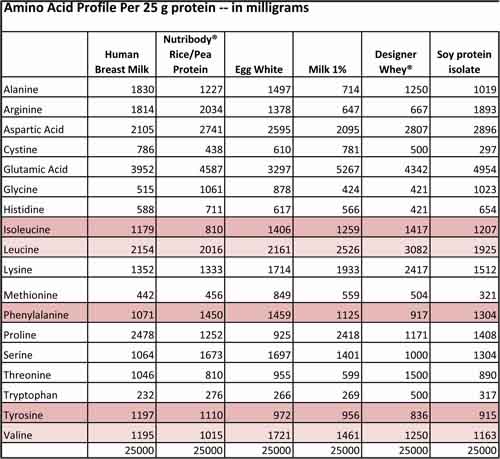Earlier this month, Nature Magazine published the results of a study that found that a simple blood test can spot diabetes a decade before even the first symptoms appear.1 Currently, doctors have no way to accurately predict the onset of diabetes other than generally observing weight and rising blood sugar levels. Obviously, ten years of early warning would represent a huge advance in dealing with diabetes and could help prevent complications like heart disease, stroke, kidney failure, blindness, and amputation.
And that is all well and good, but the real treasure of the study may lie just below its “press release” results. Dig a little deeper, as it were, than any of the media reporting on it, or the researchers conducting the study for that matter, and you will find some revelatory information concerning diet and diabetes.
Before we look at the fun stuff, let’s look at the study itself.
The Study
The premise of the study was actually quite interesting. It is understood that metabolic diseases such as Type 2 diabetes are often present for years before becoming clinically apparent. For instance, by the time insulin deficiency manifests and a diagnosis of diabetes is made, pancreatic beta cells have been failing for years. Unfortunately, current modes of testing aren’t able to reveal it until the disease is fully manifest. Yes, testing for body mass index and fasting glucose levels can be predictive, but in truth, they more often than not merely reveal a disease that already exists, even if only at an early stage. But now, thanks to emerging technologies, it is possible to test quickly and inexpensively for a wide range of metabolites in the body — to see if the presence of any one, or several of them, is predictive of the later onset of disease.
With this in mind, the researchers evaluated 2,422 people who had been followed for 12 years in the early 1990s as part of the ongoing Framingham Heart Study.2 Of the people they followed, 201 went on to develop diabetes. After analyzing the data for 189 of those individuals and comparing it to 189 individuals from the non-diabetic control group, the researchers discovered some fascinating consistencies among the diabetics. Specifically, they found that:
- The fasting levels of 5 amino acids found in blood plasma — isoleucine, leucine, valine, tyrosine and phenylalanine — were strongly linked with a diagnosis of diabetes later on in life.
- The participants with the highest blood levels of three of these metabolites in particular (isoleucine, phenylalanine, and tyrosine) were 5 to 7 times as likely to develop diabetes.
To verify their results, the researchers additionally screened participants from a long term Swedish study and found among those individuals too they were able to accurately identify those who went on to develop diabetes.
Obviously, being able to identify people with a high likelihood of developing diabetes ten years before they actually come down with the disease holds out the possibility of early intervention in the form of lifestyle changes and/or drugs. Then again, we already have strong predictors in obesity and high-glycemic diets, albeit at a later stage in the development of the disease. Nevertheless, those predictors do not seem to work well in motivating intervention. This is especially disheartening considering that the disease is far more imminent, in fact most likely already present, when these predictors rear their ugly heads. How much less motivating would a prediction ten years out be perceived? On the other hand, the study was able to identify prospective diabetics who were neither overweight nor consumers of bad diets. These were people who were obviously trying to live healthy lives and therefore would likely be more amenable to altering their lifestyles if they knew what to do. In other words, there is no doubt that at least some people would benefit from a ten year heads-up on becoming diabetic.
However, before getting too excited, it should be mentioned that the researchers acknowledged that they didn’t actually know if the high levels of amino acids were cause or effect. Or as study coauthor Robert Gerszten of Mass General Hospital said, “We now need to figure out what is the cart and what is the horse. In other words, are these early markers of the disease or do they participate in the causal pathway that leads to the condition? We are currently investigating this.”
Then again, the answer to that question may already be contained in the data they have on hand — if they looked at it from a slightly different angle.
Amino acids and diabetes
Let’s quickly repeat the facts on hand:
- Fasting blood plasma levels of three amino acids in particular (isoleucine, phenylalanine, and tyrosine) reflected a five to sevenfold increase in the risk of developing diabetes.
- The researchers don’t know whether the higher levels of the cited amino acids actually cause the increased risk, or are merely reflective of some other cause.
What I would ask at this point is: are there foods that are especially high in these particular amino acids that have already given indication that their consumption might lead to an increased risk of diabetes? Answering this question would go a long way to identifying whether high levels of isoleucine, phenylalanine, and tyrosine are cause or effect.
So with that in mind, let’s take a look.
Foods ranked high in the targeted metabolites
When looking for foods that are high in amino acids, you’re looking at protein foods. Here is a comparison of several major sources of protein in the modern diet. I included human breast milk and my own Nutribody® rice/pea protein blend to serve as reference points. I grabbed the data for egg whites, milk, soy protein isolate, and ground beef from the USDA National Nutrient Database — converting everything to a 25 g serving of protein so we could compare beef patties to smoothies.3

Certainly nothing leaps out as distinctly dangerous in “every” category — but then it couldn’t, could it since each serving totals 25 g. If one amino acid is higher, another has to be lower to compensate. However, some smaller differences do stand out, especially when you consider how many servings people might have of that food in any given week, month, year, etc. For example: egg whites are notably higher than breast milk in isoleucine, phenylalanine, and valine — three of the five targeted metabolites. And then when you consider that the difference will likely be exacerbated if someone is regularly having egg white omelets in pursuit of health. Another example is milk, which is notably higher in leucine and valine. And then there’s whey, which is notably higher in isoleucine and “way” higher in leucine. Soy protein isolate and rice/pea protein each have one amino acid a bit out of line, but not multiples. And hamburger, surprisingly, stacks up quite well in its amino acid profile. If it weren’t for the other issues associated with meat, you might have something there. Keep in mind, there is a huge difference between organic, grass-fed, meat and dairy and the hormone-injected, grain-fattened variety. But that said, let’s look at the two protein sources on the list that have several amino acids that deviate substantially from human breast milk — eggs and dairy.
Eggs and diabetes
 So are eggs good for diabetics? Well, if you search on the internet, you’ll find most sites say that eggs are great for diabetics. They’re extremely low on the glycemic scale; they’re a great source of protein; and new studies have shown that contrary to popular belief, dietary cholesterol from foods such as eggs has little effect on the body’s blood cholesterol levels. And that’s absolutely true, as far is it goes. In fact, I’ve reported on those studies myself. Yes, if your focus is on heart disease, eggs get a clean bill of health. But it appears eggs have a detrimental effect on diabetes that has nothing to do with cholesterol.
So are eggs good for diabetics? Well, if you search on the internet, you’ll find most sites say that eggs are great for diabetics. They’re extremely low on the glycemic scale; they’re a great source of protein; and new studies have shown that contrary to popular belief, dietary cholesterol from foods such as eggs has little effect on the body’s blood cholesterol levels. And that’s absolutely true, as far is it goes. In fact, I’ve reported on those studies myself. Yes, if your focus is on heart disease, eggs get a clean bill of health. But it appears eggs have a detrimental effect on diabetes that has nothing to do with cholesterol.
According to a study out of Brigham and Women’s Hospital and Harvard published in Diabetes Care in 2009, men with the highest level of egg consumption — at seven or more per week — were 58% more likely to develop Type 2 diabetes than those who did not eat eggs, and women were 77% more likely to become diabetic if they ate at least an egg a day.4 Perhaps all of the focus on cholesterol and diabetes misses the point. Perhaps the question is protein, and specifically the amino acid profile of that protein. If so, then the high isoleucine, phenylalanine, and valine levels in eggs and egg whites might be a problem. And if that’s true, isn’t that one heck of surprise for all those people eating egg white omelets thinking they’re being extra healthy. (By the way, the amino acid profiles for egg whites and whole eggs are very similar.)
Milk and diabetes
 If our theory holds true that high levels of certain amino acids as found in specific foods could lead to diabetes, then we might expect to see a higher level of diabetes in those who drink large amounts of milk as noted in our chart. And in fact, the data supports that.
If our theory holds true that high levels of certain amino acids as found in specific foods could lead to diabetes, then we might expect to see a higher level of diabetes in those who drink large amounts of milk as noted in our chart. And in fact, the data supports that.
In 2005, the American Journal of Epidemiology published the results of a study linking milk and dairy consumption with an increased risk of being diagnosed with Type-2 diabetes. The study, conducted over 37 years out of the National Public Health Institute in Helsinki, Finland found that diets high in fruits and vegetables were associated with a reduced risk of diabetes, whereas diets associated with high consumption of milk, cheese, butter, and potatoes were associated with a notably higher risk.5 In addition, a second study out of Denmark, published the same year, found that a high intake of milk increased insulin resistance in young boys .6 Especially interesting is the fact that this study found that high consumption of meat had no such effect — only dairy. But based on the chart we looked at earlier, meat’s amino acid profile is friendlier than dairy’s, at least according to the study findings.
Aspartame
It’s not a protein food, but I’ve got to talk about aspartame because it does relate to the study and our amino acid chart. The artificial sweetener aspartame is a methyl ester of a dipeptide composed of two amino acids — aspartic acid and phenylalanine. Once ingested, it tends to break down into its constituents. This is significant for two reasons. First, phenylalanine was identified in the study as one of the three primary metabolites associated with diabetes. Considering that the study data was gathered during the early 1990s when aspartame was the artificial sweetener of choice, especially in diet sodas, the likelihood that aspartame itself may have contributed to the high incidence of diabetes we have seen in the two decades since cannot be discounted. How ironic if the very thing that people were using to avoid weight gain and diabetes may actually have contributed to both.7 And in fact, a study presented at the Endocrine Society in 2009 found that the use of artificial sweeteners (particularly aspartame) was indeed linked to a twofold increase in diabetes.8 Most definitely ironic!
What it all means
As the researchers pointed out, cause and effect has not been established between the cited amino acids and diabetes — merely a relationship. Further, it has not been clearly established that dietary intake of said metabolites leads to an increase in their plasma fasting levels, although as we have seen, there certainly are indications. And finally, and perhaps most important, even if there is a cause and effect relationship, the reason for it is unknown at this time. The bottom line is that definitive conclusions are not possible — but inferred recommendations certainly are.
As we have seen, there is some evidence to indicate a relationship between high consumption of certain protein sources such as eggs and dairy, which are high in several of the cited metabolites, versus other protein sources for which no such relationship has yet been established. Then again, perhaps that is because no one has conducted such a study to establish a connection between soy, rice, and pea proteins and diabetes. In fact, the only studies indicate just the opposite. For example, there have been studies that indicate that soy reduces lipid production and prevents hyperinsulinemia (the presence of excess insulin in the blood). But as we saw earlier when examining eggs, proving that a food positively affects one marker of diabetes is not necessarily the same as saying that it ultimately does not contribute to the overall incidence of the disease. On the other hand, since each of the vegetarian protein sources were only high in one cited metabolite, not multiple ones, that’s probably a good sign.
Then again, is the problem that a particular protein is high in certain amino acids, or is it a question that high protein foods are simply high in amino acids in general — and if you eat enough of them, you raise all amino acid markers? Yes, that’s possibly true, but there is no indication in the study that those individuals who became diabetic ate larger amounts of protein than the non-diabetics — only that their blood levels of certain amino acids were higher. Nor for that matter was there any indication as to what type of protein they ate.

There is another study that might shed some light on the issue. In this 1997 study, Type 1 diabetics who reported protein consumption less than 20% of total calories had average albumin excretion rates (AERs) below 20 mg/min. But in those whose protein consumption was greater than 20%, the average AERs increased and were in the “microalbuminuric range” indicative of incipient diabetic neuropathy. The important point in this study is that trends reached statistical significance only for animal protein, not for vegetable protein.9 In other words, the type of protein consumed matters — not just in terms of fat, growth hormones, cholesterol, etc. — but for how the body processes the protein itself. This is a very key point and focuses right back, like a laser beam, to our original study’s findings concerning specific amino acids. Different protein sources produce different effects in the body.
Before we jump on animal protein in general, though, it should be mentioned that according to research presented at the American Heart Association’s Scientific Sessions in 2008, retired National Football League players had a significantly lower prevalence of diabetes and metabolic syndrome compared to the male population as a whole. This is significant in that football players are generally large consumers of animal protein (including dairy) as part of their training regimens. Then again, NFL retirees had a higher prevalence of elevated cholesterol and impaired fasting glucose, which might be indicative of future diabetes.10 Not to mention the fact that NFL players (active and retired) tend to exercise more than the population as a whole — and exercise changes outcomes.
The bottom line comes down to moderation in all things. The body hates imbalances and extremes even when it comes to amino acids. Or as a variation on what I’ve said before, “Too much of a good thing is bad. Too much of any single amino acid is bad. No matter how healthy an amino acid is, if you overindulge in it, disease will result, not health.”
Recommendations:
Until we know more as to whether the five amino acids in the study are cause or effect, moderation is the recommendation.
The truth is that most people in the developed world eat more protein than they need. Food consumption surveys show an average protein intake of approximately 100 grams per day (regardless of body type, sex, or exercise levels), with about 70% of that from animal sources. Most people could do with significantly less protein per day (about 45-55 grams per day is adequate for most). Then again, people with special needs such as performance athletes, active adults, senior citizens, and people recovering from illness or injury may have requirements that run up to as much as 70-100 grams a day. Beyond that, we’re talking about bodybuilders looking to put on as much muscle mass as is humanly possible. And when it comes to that, each bodybuilder knows his/her own requirements.
 As to what type of protein to eat, I would recommend backing off from egg and dairy. You don’t necessarily have to stop eating them if that’s your thing; you just might want to eat less of them, though — and not just because of the diabetes issue. They are both highly allergenic, as is soy for that matter. That means that high consumption of these foods is liable to cause some degree of systemic inflammation — a condition associated with many diseases, including heart disease and diabetes. My preference is for hypoallergenic proteins. These include organic grass fed beef, low-mercury, non-toxic (and dare I say non-radioactive) fish, and rice, pea, and hemp protein concentrates.
As to what type of protein to eat, I would recommend backing off from egg and dairy. You don’t necessarily have to stop eating them if that’s your thing; you just might want to eat less of them, though — and not just because of the diabetes issue. They are both highly allergenic, as is soy for that matter. That means that high consumption of these foods is liable to cause some degree of systemic inflammation — a condition associated with many diseases, including heart disease and diabetes. My preference is for hypoallergenic proteins. These include organic grass fed beef, low-mercury, non-toxic (and dare I say non-radioactive) fish, and rice, pea, and hemp protein concentrates.
Oh yes, and stay away from artificial sweeteners — especially aspartame.
For more on protein, check out Protein, Parts 1, 2, and 3.
For more on diabetes, check out Diabetes — the Echo Effect.
1 Thomas J Wang, Martin G Larson, Ramachandran S Vasan, et al. “Metabolite profiles and the risk of developing diabetes.” Nature Medicine 17,448–453(2011). <http://www.nature.com/nm/journal/v17/n4/full/nm.2307.html>
2 Daniel Levy, Philip A. Wolf, Larry D. Atwood, et al. “Framingham Heart Study.” National Heart, Lung and Blood Institute and Boston University. 1948-ongoing. <http://www.framinghamheartstudy.org/>
3 “USDA National Nutrient Database for Standard Reference.” US Department of Agriculture. 24 April 2011. <http://www.nal.usda.gov/fnic/foodcomp/search/>
4 Luc Djoussé, MD, DSC, J. Michael Gaziano, MD, Julie E. Buring, SCD and I-Min Lee, MBBS, SCD. “Egg Consumption and Risk of Type 2 Diabetes in Men and Women.” Diabetes Care. February 2009 vol. 32 no. 2. <http://care.diabetesjournals.org/content/32/2/295.full?sid=95a8baab-acbf-49a4-81a0-5bb4849c21f9>
5 Jukka Montonen, Paul Knekt, Tommi Härkänen,et al. “Dietary Patterns and the Incidence of Type 2 Diabetes.” Am. J. Epidemiol. (2005) 161 (3): 219-227. <http://aje.oxfordjournals.org/content/161/3/219.full>
6 C Hoppe, C Mølgaard, A Vaag, V Barkholt, and K F Michaelsen. “High intakes of milk, but not meat, increase s-insulin and insulin resistance in 8-year-old boys.” European Journal of Clinical Nutrition (2005) 59, 393–398. doi:10.1038/sj.ejcn.1602086 Published online 17 November 2004. <http://www.nature.com/ejcn/journal/v59/n3/full/1602086a.html>
7 Pamela L. Lutsey, MPH; Lyn M. Steffen, PhD, MPH, RD; June Stevens, PhD, MS, RD. “Dietary Intake and the Development of the Metabolic Syndrome.” Circulation. 2008;117:754-761. <http://circ.ahajournals.org/cgi/content/full/117/6/754>
8 Kristofer S. Gravenstein. “Use of Artificial Sweeteners Linked to 2-Fold Increase in Diabetes.” 29 June 2009. Medscape Diabetes & Endocrinology. 24 April 2011. <http://diabetes.com.sg/index.php?option=com_content&view=article&id=271:use-of-artificial-sweeteners-linked-to-2-fold-increase-in-diabetes&catid=72:medical-findings&Itemid=50>
9 Toeller M, Buyken A, Heitkamp G, Bramswig S, Mann J, Milne R, Gries FA, Keen H, and the EURODIAB IDDM Complications Study Group: Protein intake and urinary albumin excretion rates in the EURODIAB IDDM Complications Study. Diabetologia 40:1219-26, 1997.
10 Science News. “Football Players: Staying Active May Lower Health Risks For Large, Retired Athletes” 12 Nov 2008. Science Daily. 25 April 2011. <http://www.sciencedaily.com/releases/2008/11/081111102757.htm>












I'm curious about your take
I’m curious about your take on the type of egg and dairy that folks eat. I get very healthy eggs from a farm and use all raw dairy products. Since these are very different products than commercial food is there a difference.
Screening for amino acids
Screening for amino acids might prove useful some day …….. However, there are far more sensitive test that are readily available now. Jenny Ruhl states in her book / website Blood Sugar 101 that recent research has indicated that for the majority of people who become type 2 diabetics, they develop high blood sugars postprandial one to ten years before their fasting glucose levels become high. So, any one who is concerned, should get a home test kit and test their blood sugar 1 to 2 hours after they eat. Get a basal insulin test. People may be running high levels of insulin before they are officially diagnosed. In Richard D. Moore book on High Blood Pressure Solution … he states that too high a ratio of sodium versus potassium sets off a cascade of events that cause insulin resistance, leading to high levels of insulin and the various ramifications of hypertension. He suggest a diet with four times or more potassium than sodium. If this is the case, then it would explain why a diet heavy in vegetables so useful in controlling type 2 diabetes.
The study is very
The study is very interesting, but as you stated in your article Jon, the researchers could not determine if these high fasting levels were the cause or effect of diabetes. Although I side with you on the high amounts of protein we are consuming, I do not think that the consumption of foods high in the five proteins discussed in the study are the cause of diabetes. Studies show that high protein diets improve glycemic control (One study: Am J Clin Nutr. 2003;78:671-672, 734-741) Also, studies on supplementation with BCAAs which are made up of 3 of those 5 proteins mentioned (leucine, isoleucine, and valine) have demonstrated favorable effects on metabolic syndrome (One study: Am J Cardiol. 2008 Jun 2;101(11A):82E-88E). Please read this recent article from Life Extension about the health benefits of BCAAs. I found it to be really good: http://www.lef.org/magazine/mag2011/may2011_Can-a-Power-Booster-Also-Be-a-Longevity_Booster_01.htm
To me, the high protein levels in the blood appear more likely to be an effect of underlying metabolic dysfunction. We definitely need more studies to understand what is going on here.
Thanks for all you do Jon. I look forward to meeting you one day.
Hi Doc, this study has many
Hi Doc, this study has many blinders, and come up thin on second reading to pause any egg intake here. thank you.
what about whey protein this
what about whey protein this has high levels of these amino acids
Answer: Check out the effects of whey protein here: http://www.jonbarron.org/athletic-performance/natural-health-newsletter-protein-3
I would like to know the same
I would like to know the same thing. We drink only raw milk, and the raw milk has about 5-6 times the beneficial CLA levels or pasteurized homogenized milk. Raw milk supposedly has a low glycemic index.
German New Medicine has
German New Medicine has identified the causes and the cures of Diabetes 1 and 2.
Diabetes 1 is caused by a “resistance” conflict, generally at a young age, when a child was restrained (very forcefully) during vaccination procedures. This causes a functional impairment of the beta islet cells in an effort to increase glucose supply to the very active muscles.
Diabetes 2 is caused by an “anger” conflict with family members over an inheritance . It could also be caused by the need to cancel a vacation, which was highly anticipated, keeping in mind, that the cause involved a family member. This results in tumor growths in the pancreas in an effort to supply extra amounts of insulin.
The conventional wisdom regarding Type 1 diabetes “sees” a decrease of beta cells and suspects an autoimmune situation, but the decrease is realized on purpose by the brain so more ‘sugar’ is available to the muscles to develop more strength.
In the case of Type 2 diabetes, the extra amount of cells producing extra insulin to help ‘digest’ the anger ‘morsel’ and is interpreted to be caused by “insulin resistance” of the cells.
I submit, that all the research has identified preconditions and picked up on the body’s ‘compensational efforts’ to function in the ‘normal range’ while these programs are running.
These programs are Significant Biological SPECIAL programs of Nature (SBS) and will initiate a healing (which is the second phase), when the conflict has been resolved. In order to ‘resolve’ a conflict activity, it needs to be identified and through logical thinking reverse it. Sometimes this happens ‘spontaniously’ because the shock event (Dirk Hamer Syndrom=DHS) has happened so long ago and the person(s) involved no longer is/are an issue.
Diabetes 1, in all likelyhood having been caused by a healthcare worker is very difficult to reverse this spontanious way, because they are ever present in our lives. This causes a “hanging healing” situation with many residivisms.
By the way, all allergies are “tracks” laid down at the moment of a DHS. The purpose is to warn an individual not to ‘go there’ because the last time one did. bad things happened. This explaines ‘common colds, or ‘hay fever’ or the stronger versions of them, ‘influenca’. neither one of them are contagious, because these are the “healing symptoms” of conflicts, such as above (stink conflicts = awe, this stinks!) I have tested this out and found, that I did not get “infected” by the person, because I know the causes and the fact that the person was healing!
NO PANIC! – because this sets us up for the fall!
There is definitely a
There is definitely a difference between grass fed eggs and raw dairy over the drek in most supermarkets. I think what Jon is saying is that even so we should limit our consumption of eggs and dairy. I usually have a couple of eggs a week like 2-4 at most. I’ll continue doing that. I usually only have 2 oz. of raw milk at breakfast and a full-fat plain yogurt a few times a week. I’ll probably still continue to do that.
During the Second World War
During the Second World War my father spent weeks fighting from water-filled trenches and developed nephritis, which I gather is a kidney complaint. After the war, back in England, the medical advice to him was to eat copious amounts of protein, as he was told he had a hole in his kidney through which protein was seeping. In fact he used to have big drums of a very light, white powder called Casilan, sprinkled on, or mixed in with, any food he could bear it on – or in! Apparently, it tasted vile. It was probably about seven years later that he was diagnosed with diabetes type II. After that the Casilan treatment was suspended.
Having read your report on the connection between high protein levels and diabetes, and purely as a point of interest, I wonder whether this high dosage of protein could have caused – or exacerbated – my father’s condition. He died in 1984, aged 75, of a heart attack.
I respect your work very much
I respect your work very much Jon … and I agree with the aspartame comment, but this about milk and eggs is simply not true.
Mayo Clinic was successfully curing diabetes in the 1930s by feeding the patients a diet of lots of milk, cream and butter. Curing, not just treating. (Then insulin came along and it was much more profitable, so all the food cures were simply forgotten.) Of course, it was all full fat and natural: no processing, no pasteurization/homogenization, no skimming and definitely no hormones, antibiotics and vaccine residues.
As for the eggs, I am a post menopausal woman who has cured her own diabetes (and several other ailments) 6 years ago, and I did it mostly by eating a lot of fats, especially butter, coconut butter and ful fat cream, and lots of good protein. I eat 30 eggs per week, each week. All organic, of course. Whenever I go for a medical check-up (I only do it because we are required to do so at work, not because I personally would feel the need to go), my doctor asks ME to tell HER all that I’ve been doing to stay so fit and healthy at my age, and after being heavily overweight, ill and miserable for most of my adult life.
I now only eat real food (no food industry products for me) the way that Nature/God intended us to do, and went through menopause without even noticing. I am full of energy, look at least 15 years younger and haven’t had a cold in six years. Just eat God made foods versus Man made, and you’ll be fine. Don’t take any drugs, avoid all chemicals, be it in food, cosmetics, household cleaners, gardening products etc., and take a few good supplements. Eat a good proportion (at least one third, but strive for more) of your food, including meat and eggs, raw because otherwise you will not get enough digestive enzymes to make the most of your food. Avoid soy, gluten and sugar, and limit all carb foods that cannot be ingested without cooking (you may cook them or not, but if they cannot be eaten without cooking at all, only eat them on rare occasions). Buying best organic food and then destroying it all by (over)cooking means throwing good money away.
Make sure to ferment (some of) your food.
Enjoy eating and being alive.
Remove teflon, plastics and aluminum from your kitchen – and from your life, as much as you can.
Get back in touch with Nature. Find some other technique to relax as well.
Move, if only just a little bit, several times through the day. The rewards will be beyond anything you have ever experienced in your life.
As for the dairy products, many people who are allergic to milk will tolerate fermented products just fine. Even more so if these products are made from raw, organic, unprocessed milk. The problem is not milk itself, the problem are deficiencies of our unhealthy toxic bodies and the world that we live in.
Response To Many Questions
Response To Many Questions Below: Jon has talked repeatedly about the superiority of raw milk VS commercial., homogenized, pasteurized milk (for example (http://www.jonbarron.org/immunity/newsletter-raw-milk-bird-flu). However, even though he views it as superior, he still has a problem with the allergenic nature of some of the proteins in dairy, raw or not. The problem is exacerbated when heated, but is still there in raw dairy. Bottom line is that it’s not a cholesterol issue or a fat issue; it’s a protein issue.
As for eggs, Jon has the same concerns. Again, it’s not a cholesterol issue or a fat issue; it’s a protein issue. Eggs contain some of the most allergenic proteins found in the human diet. As he has said previously:
“Eggs are arguably the most allergenic of all proteins. Oh, and for those of you who eat only egg whites, it should be noted that the allergenic proteins are concentrated in the egg whites….Contrary to popular belief, because whole eggs have a better amino acid profile than egg whites, the protein is more bioavailable in whole eggs than in egg whites. Whole eggs are also much more nutrient dense than egg whites since egg yolks contain all of the vitamins, minerals, antioxidants, and Omega-3 fatty acids (if you're eating free range chicken eggs). In fact, other than protein, egg whites are pretty much nutrient dead. And as for cholesterol concerns, recent studies do not support them…If you’re going to eat eggs, eat whole eggs. But, all that said, the protein in eggs is still highly allergic and makes for very smelly gas.”
In summary, Jon is not opposed to dairy and eggs. But because of allergy issues, he doesn’t think they should be your primary protein source. In other words, consume them in moderation. And if you are going to eat them, you want to eat them in as pure a state as possible. Raw, organic, grass-fed for dairy. And eggs, from “true” cage-free chickens fed an all organic multi-grain diet that is high in flax.
So many studies about
So many studies about diabetes are still coming out and most of them contain the same theories about the causes of diabetes.
The whole sick world is waiting for a cure so while those studies are being conducted, Big Pharma is making a killing.
Diabetes is a simple disease caused by loss of discipline in terms of food and drinks (sweet drinks, particularly). We did not see it as prevalent as it is today in the ’60s to the ’80s because people in urban areas the whole world over then walked more and had nothing of the types of food and drinks that most people today loves to ingest.
There could never be a cure for diabetes and complications as long as the medical profession and Big Pharma will oppose natural medicines which they call primitive because they were untested by their modern testing methods.
But is amputation, which is still being utilized to arrest the spread of infection, worth being called a modern practice? Can’t it be outlawed because of its being primitive and barbaric?
And insulin injections should be included too because they are inhuman torture.
Diabetes has a cure that totally reverses the condition and the complications and it comes from a natural source. Big Pharma would never take a look at it because it would not bring them any profit.
What a joy to find someone
What a joy to find someone else who thnkis this way.